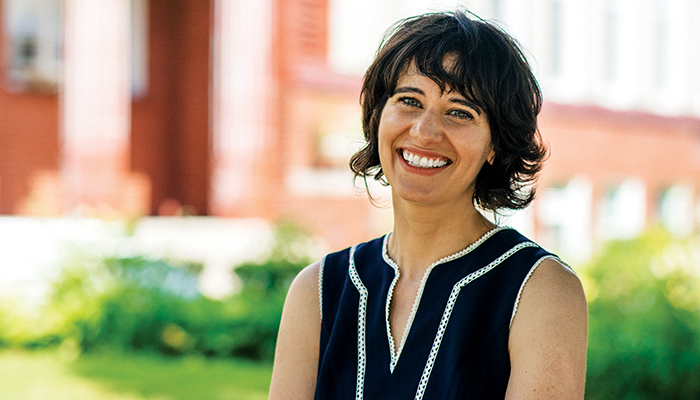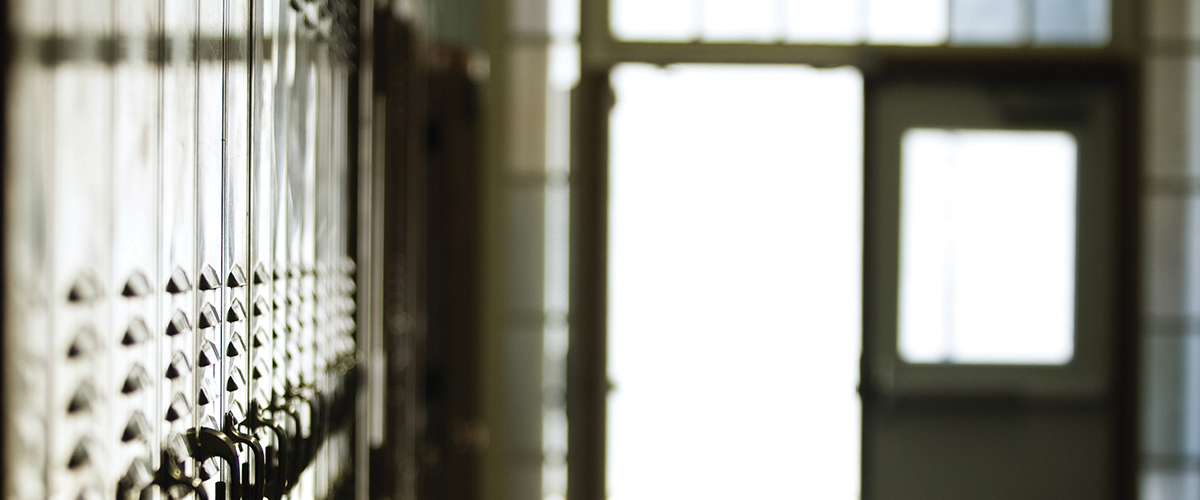Why Good Policies Go Bad
Simone Ispa-Landa probes disparities in school discipline and subtle inequalities of restorative justice.
By Lisa Applegate
Schools are increasingly turning to peace circles, peer juries, and other restorative justice measures to help change the traditionally punitive nature of school discipline.
Yet mounting evidence suggests that alternative approaches haven’t slowed a troubling trend: Educators still disproportionately suspend, expel, and criminalize students of color, reinforcing what critics call the “school-to- prison pipeline.”
As part of an ambitious effort to reduce racial disparities in school disciplinary practices, Northwestern University education sociologist Simone Ispa-Landa will be embedded in a large urban high school over the next five years to study the outcomes of its restorative justice program.
Her deep dive, funded by the William T. Grant Foundation, will offer a fresh perspective on the heated national debates over school discipline by examining how restorative practices coexist with punitive measures, school-based police officers, and proactive parents. An expert on subtle inequities of policy, Ispa-Landa argues that problems can flare when old and new policies overlap—and administrators don’t consider the larger picture.
“When schools use restorative justice but also retain the option to suspend or expel students, administrators have the leeway to discriminate,” says Ispa-Landa, assistant professor of human development and social policy at the School of Education and Social Policy (SESP). “Educators may be channeling students from different racial backgrounds into different punishments.”
Racial bias in school discipline has been well documented. A 2018 report by the Government Accountability Office found that black students in K–12 schools are far more likely to be disciplined—whether through suspension or referral to law enforcement—than their peers of other races.
Another study found that 28 percent of black middle school boys had been suspended at least once, compared with 10 percent of white middle school boys, according to a policy briefing by the National Education Policy Center. Black girls, meanwhile, are six times as likely to be suspended as white girls, according to a report by Columbia Law School’s Center for Intersectionality and Social Policy Studies.
The School-To-Prison Pipeline
“Tough on crime” law enforcement policies emerged in the 1970s and began trickling down to schools a decade later, Ispa-landa says. Many schools hired police officers as school resource officers, expanded their security systems, and implemented zero-tolerance policies to deter misbehavior.
“The logic that creates and supports mass incarceration shapes schools, too,” says Aaron Kupchik, professor of sociology and criminal justice at the University of Delaware and Ispa-Landa’s project mentor.
Kupchik, the author of The Real School Safety Problem, argues that schools are increasingly willing to police and punish students—often for minor misbehavior that, a generation ago, would have led to detention or a trip to the principal’s office. As a result, more students are suspended, expelled, and arrested at schools for relatively small infractions, he says.
“We know suspended kids drop out of school, and they’re more likely to be delinquent and more likely to be involved in the criminal justice system,” says Marcus Campbell, principal of Evanston Township High School and adjunct SESP faculty member. “Race is a predictive factor in who will be expelled and suspended.”
Race and class are factors when parents try to intervene on their child’s behalf. Middle- class parents may have more success helping their children avoid harsh and stigmatizing punishments, Ispa-Landa says. At the same time, studies have shown that black middle- class parents who express concerns about their children’s educational experiences face uphill battles.
“Many school officials seem to hope to appease middle-class parents but appear indifferent or even hostile when parents from a non-dominant group raise concerns,” she says.

Simone Ipsa-Landa
Assistant Professor of Human Development and Social Policy
Keeping Schools Safe
Ispa-Landa, Kupchik, and others who research restorative justice say it makes sense for schools to have a combination of strategies since suspensions are sometimes necessary for safety’s sake. But an ideological shift may also be in order.
Most schools that use restorative justice programs don’t try to create an overarching restorative school culture or adopt it as a guiding philosophy, Ispa-Landa says. “Instead, the model is to create a formal program designed for students who have broken particular school rules.”
Ultimately, Ispa-Landa hopes her research project will help educators and policy makers design more equitable disciplinary environments and ensure that programs like restorative justice meet the special needs of teenagers, whose brains are still developing.
“I’m fascinated by the subtle things that can happen to increase or decrease a person’s sense of power,” Ispa-Landa says. “The best interventions are the ones that respond to people’s real experiences and the ways they really live their lives, instead of how we imagine them.”
